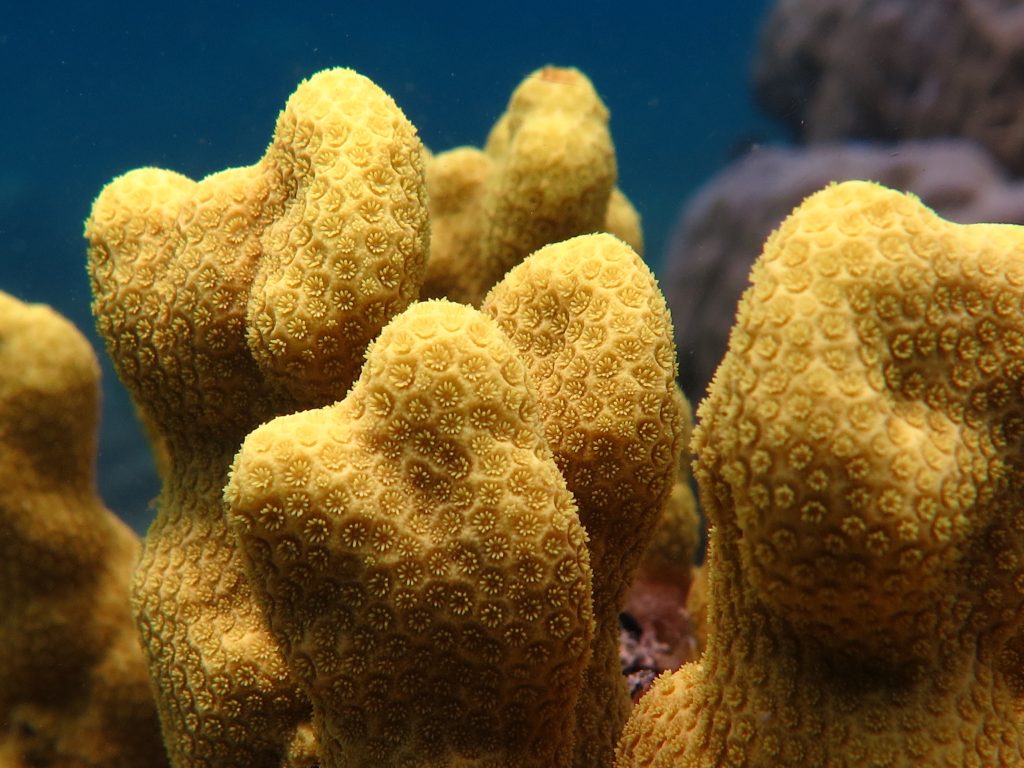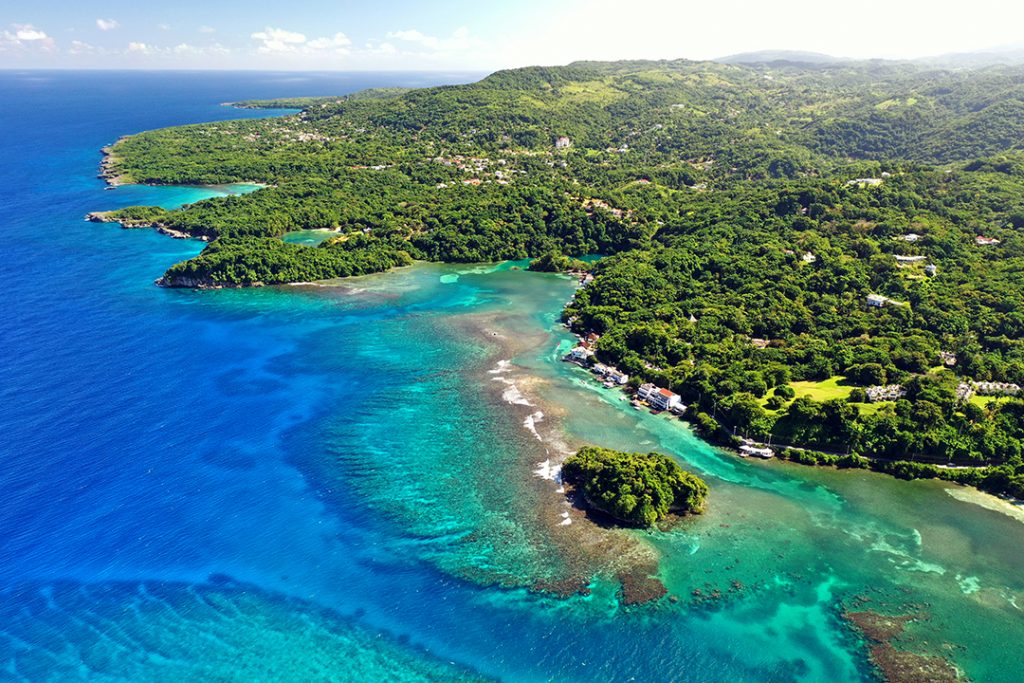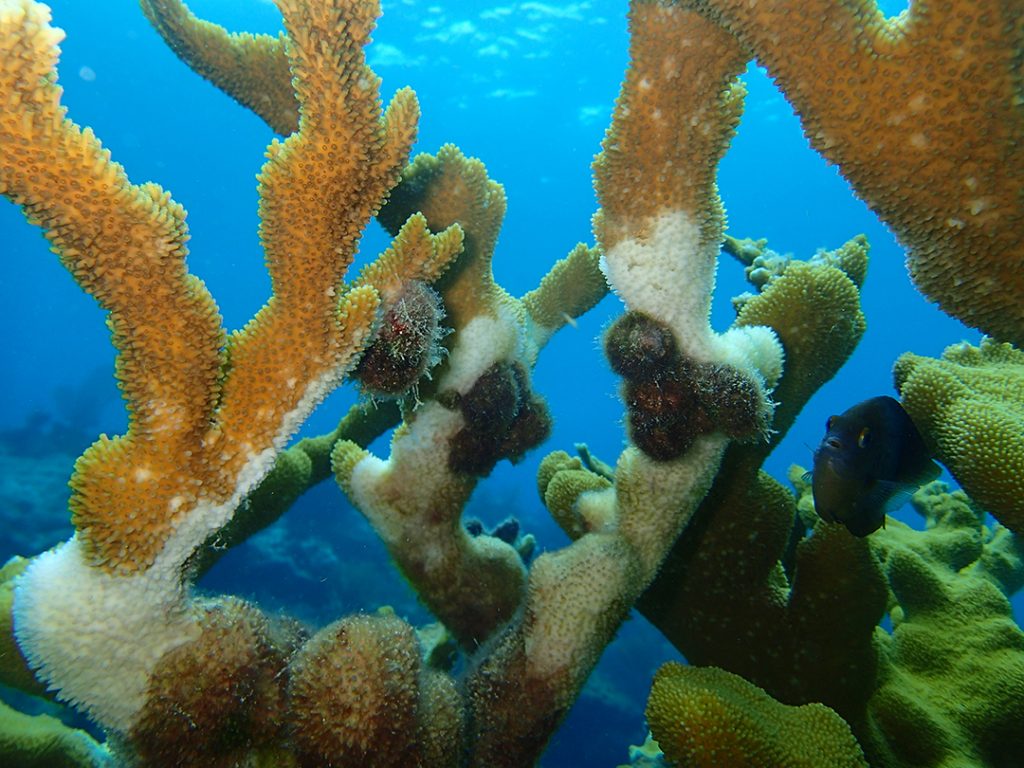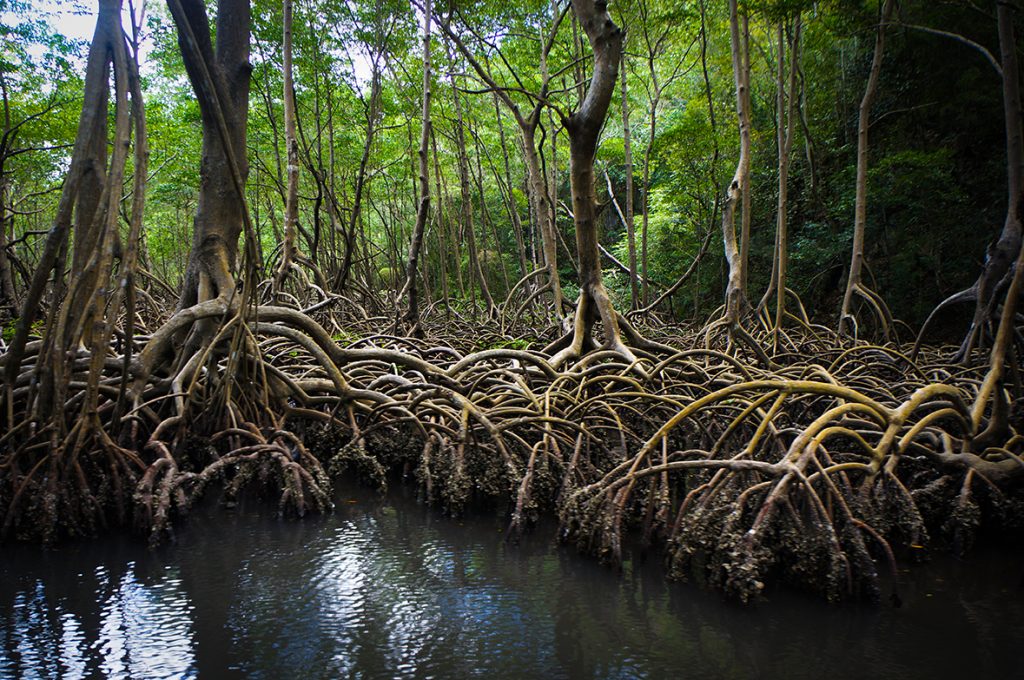Coral Reef Ecology
Coral reefs are some of the most valuable ecosystems on the planet. While they cover only about 0.1% of the ocean floor, they are home to at least a quarter of all marine species and support approximately 4,000 species of fish and 800 types of corals. ref However, their value extends well beyond their biological diversity, as they provide countless goods and services to the coastal communities that depend on them. Examples of these services include fisheries, tourism and recreation, shoreline protection, and sources of medicinal compounds. ref
Coral Biology
Corals are living organisms in the phylum Cnidaria. There are two main types of corals: soft corals and stony corals (also called ‘hard’ corals). Stony corals of the order Scleractinia are the corals primarily responsible for reef formation through the production and secretion of calcium carbonate (e.g., CaCO3, or limestone). Most reef-building corals have a symbiotic relationship with photosynthetic dinoflagellate algae called zooxanthellae (or Symbiodiniaceae, previously referred to as Symbiodinium). The relationship is considered mutualistic, where the coral provides a protected environment, carbon dioxide (CO2) and nutrients (nitrogen and phosphorus) to the algae, and the algae in turn provide oxygen (O2) and carbon to the coral through photosynthesis, making up 95% of the coral animal's energy needs.
Coral colonies are considered modular organisms because they consist of repeated morphological units, or polyps. The way these polyps are arranged dictates the different coral colony growth forms, or morphologies. Common descriptive terms include branching, columnar, massive, foliose, laminar, encrusting, and free-living. ref

Many clonal polyps on a branching Porites colony in Australia. Photo © Margaux Hein
Corals can reproduce through asexual and sexual reproduction. Asexual reproduction occurs through budding, where a coral polyp divides into clones forming two polyps, and fragmentation, where pieces of coral colonies break or detach and then resettle in a new location on the reef under suitable conditions. New and genetically unique coral colonies are formed through sexual reproduction. There are two modes of sexual reproduction: broadcast spawning (in which coral colonies release sperm and eggs in the water) and brooding (in which fertilization occurs internally).
Coral Reefs
Modern coral reefs (of the Holocene-Anthropocene) exist in the tropics between the latitudes of 30 degrees North and 30 degrees South, with some exceptions. Corals are generally restricted to these areas because their symbiotic relationship with photosynthetic zooxanthellae requires specific temperature, light, and salinity conditions. The major biogeographic regions where coral reefs exist are in the Atlantic Ocean, Australia, Indian Ocean, Middle East, Pacific Ocean, and Southeast Asia. ref
There are four types of reefs:
- Fringing reefs that grow near the shoreline and are the youngest in development
- Barrier reefs which are separated from the shoreline by a body of water called a lagoon
- Patch reefs that are discrete, isolated reefs that are often between fringing and barrier reefs
- Atolls which form on oceanic reefs that surround islands. The island may subside below the surface over time leaving a ring of reef enclosing a central lagoon.

Fringing reef off the East Portland Fish Sanctuary, Jamaica. Photo © Steve Schill/The Nature Conservancy
The different areas of a coral reef are categorized into geomorphologic zones due to differences in light, wave action, temperature, and sedimentation. These zones may differ depending on the type of reef (e.g., fringing, barrier, etc.) but generally consist of a lagoon, back reef, reef crest, reef slope, and fore reef. Community assemblages typically vary in different reef zones and across regions due to different environmental conditions and competitive ability of coral species.
Biological Interactions
There are many biological interactions within coral reef communities that affect the health and fitness of corals including competition, herbivory, and predation (i.e., corallivory). Because physical space is a major limiting resource on reefs, and corals are sessile organisms, they compete with many other benthic organisms, including other corals, algae, sponges, hydrocorals (or ‘fire corals’), and soft corals. Competition between corals and algae is becoming more prevalent with increased disturbances to coral reefs over the last decades.
Healthy and diverse populations of herbivores are critical in mediating coral-algal competition. Herbivorous fishes in particular play an important role in reef resilience by opening space for coral recruitment and reducing stress to existing coral colonies.
Organisms that prey on corals, called corallivores, consume coral tissue, mucus, and skeleton. This includes fishes and invertebrates from nearly every taxonomic group, including fish, snails, worms, and crabs. Damage to coral tissue or skeletons takes time and energy for corals to regenerate and recover, resulting in reduced coral growth rates, ref reproductive ability, ref or increased coral disease through vectoring. ref

The coral-eating snail Coralliophila galea feeding on Caribbean elkhorn coral Acropora palmata, leaving white skeleton behind. Photo © Elizabeth Shaver
Connected Habitats
Coral reefs are often associated with seagrass beds and mangroves. These habitats can be highly connected, and this connectivity can be especially important in maintaining the healthy functioning of coral reefs.
Seagrass beds can be found in the back reef, lagoons, and sheltered locations. They interact with the reef by receiving and stabilizing sediments, nutrient cycling, and providing nursery habitat for some fish and invertebrate species. ref Seagrass beds may also reduce levels of coral disease. ref Mangroves are found on coastlines and interact with reefs by stabilizing land-based sediment, nutrient cycling, and providing a nursery habitat for coral reef organisms. Other benefits from mangroves and seagrasses include buffering the impacts from waves and storms, ref acting as carbon sinks, and reducing impacts from ocean acidification. ref

Mangroves in the Dominican Republic. Photo © Rachel Docherty/Flickr Creative Commons
